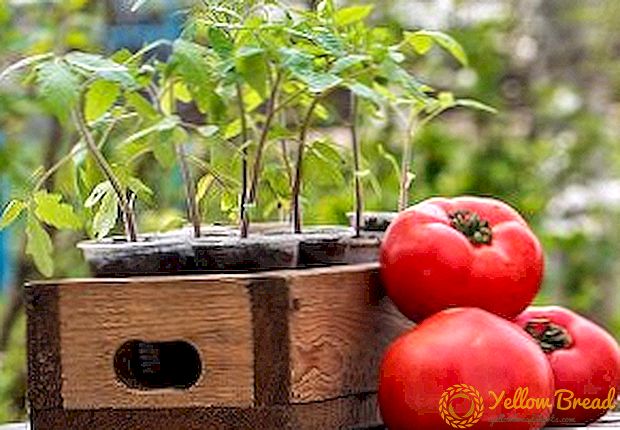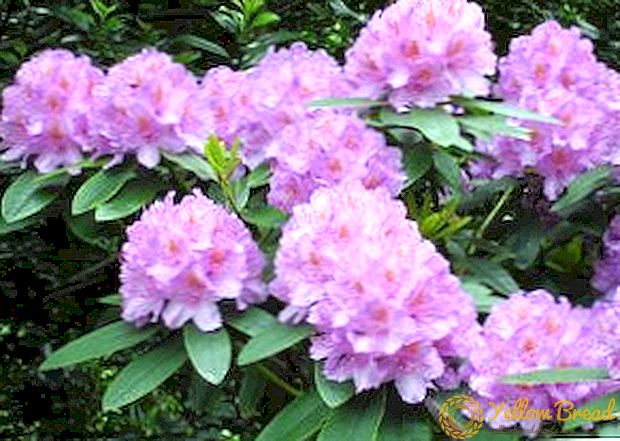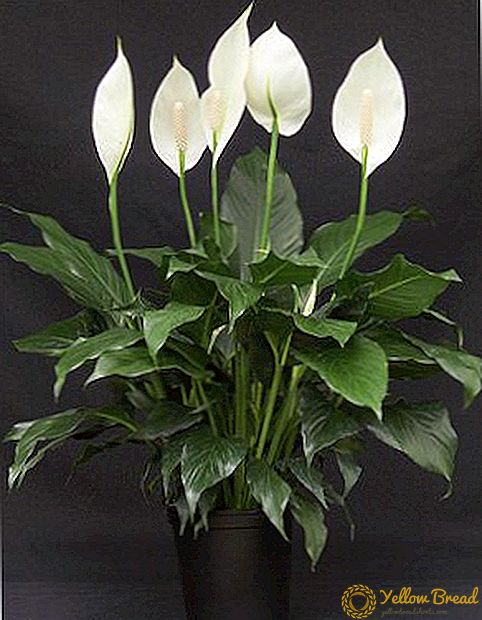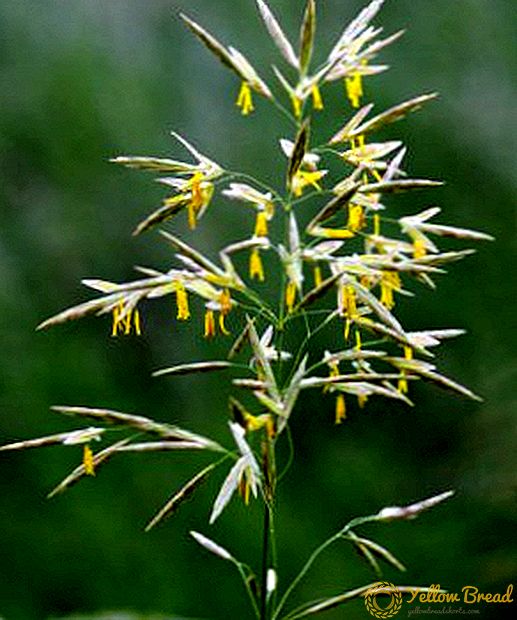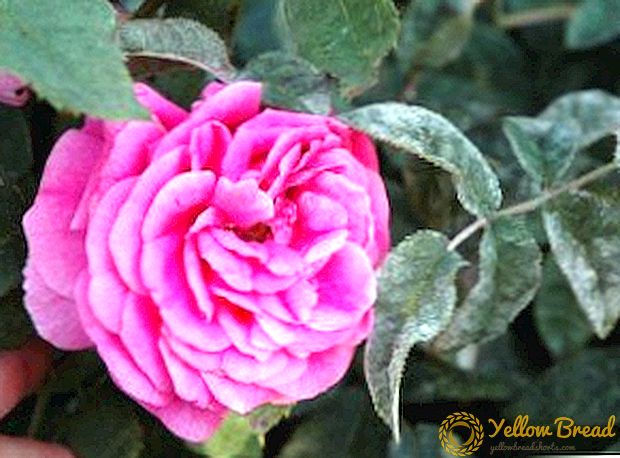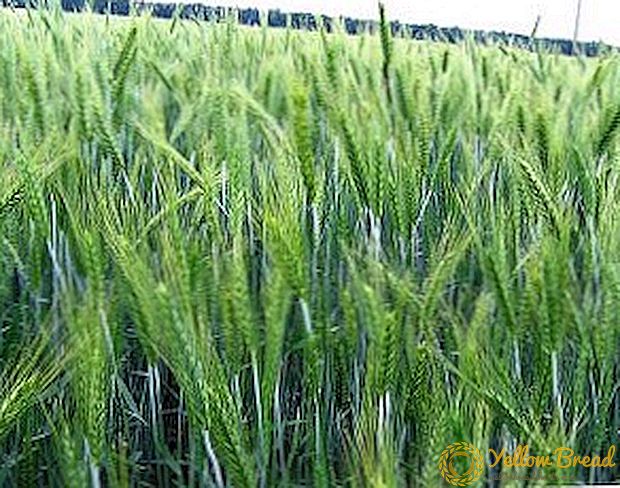 The article selected a material designed to acquaint you with a unique grain crop, bearing an interesting and unusual name - "triticale."
The article selected a material designed to acquaint you with a unique grain crop, bearing an interesting and unusual name - "triticale."
About what kind of plant it is, what triticale is planted for and what is the technology of its cultivation, read below.
- Triticale - what is it
- Main varieties
- How to plant a plant
- Growing soil
- Seed selection
- Fodder crops
- Features of growing
- Protection against diseases and pests
- Demanding feed dressing
- Harvesting
Triticale - what is it
Triticale is a product of human hands. Long-term experiments of breeders allowed to reveal the light of the first result of grain crossing - rye and wheat.
The uniqueness of this cereal crop is that it surpasses its parent plants in many key characteristics (for example, nutritional value and yield).In terms of resistance to adverse external factors, soil composition, disease and pest damage, it is an order of magnitude higher than wheat and on par with rye. The average yield of a plant is 33.2 centners per hectare, green mass - 400-500 centners per hectare. 
The stalks of grass grow from 65 to 160 cm. The structure of the ear is similar to wheat - it has more than two grains. Narrow, lanceolate spikelet and flowering scales are more like rye. The shape of the grain can be different, and the color - red or white.
Winter triticale has a number of biological features that are different from other grains. The hybrid is characterized by a high protein content - 11-23% (which is 1.5% higher than that of wheat, and 4% higher than that of rye) and amino acids: lysine and tryptophan. 9.5% of the protein nutritional value of triticale grain exceeds that of wheat. The quality of gluten in a hybrid is considered to be lower than in its progenitress.
- large grains;
- high graininess of spikelets;
- unpretentiousness at cultivation;
- frost resistance;
- resistance to powdery mildew, brown rust, hard smut;
- self-pollination

The disadvantages include:
- difficult separation of the wheat from the chaff;
- susceptibility to root rot and snow mold;
- late maturity
The main producers today are such EU countries as Poland (the leader in production), France, and Germany. Triticale is also produced in Australia and Belarus.  Many other states are interested in culture. In terms of agronomic practice, this grain plant is poorly understood.
Many other states are interested in culture. In terms of agronomic practice, this grain plant is poorly understood.
Main varieties
Triticale is divided into two main types:
- winter;
- spring.
According to the method of application, the following varieties are distinguished:
- cereals;
- feed;
- feed grain.
For a long time of existence of the grass, several varieties of triticale were bred. The most popular among winter crops are: ADP2, ADM4, 5, 8, 11, Zenit Odessa, Amfidiproid 3/5, 15, 42, 52, Kiev Early, Cornet, Papsuevskoe.  Among the spring: "Stork Kharkov", "Krupilsky".
Among the spring: "Stork Kharkov", "Krupilsky".
How to plant a plant
The characteristics of planting and growing triticale are similar to the cultivation of other cereals. However, there are some nuances.
Growing soil
The plant is not demanding on soils; it can grow on all types of soils, except for loose sand and uncultivated peatlands. However, it will be best to grow in black soil. In soils, consisting mostly of sand or peat, a hybrid is able to produce a richer crop than its parents.
The optimum pH of the soil for grain crops is 5.5-7.Thus, the best for planting triticale are soils with a slightly acid and neutral alkaline reaction. Increasing the pH to 6-6.5 increases the yield of the plant by 14-25%. If the soil is too sour, it must be predusting before sowing  The best precursors for triticale will be corn, peas, perennial herbs (non-cereal), early potato varieties. You should not plant the plant after other cereals, especially after rye, barley and winter wheat - this is fraught with the spread of diseases and harmful insects.
The best precursors for triticale will be corn, peas, perennial herbs (non-cereal), early potato varieties. You should not plant the plant after other cereals, especially after rye, barley and winter wheat - this is fraught with the spread of diseases and harmful insects.
Soil cultivation for sowing will largely depend on the predecessors, the natural conditions inherent in the area where the planting of grass is planned, as well as on the degree of weed grass and its species.
Seed selection
Under sowing using high quality seeds with a germination rate of at least 87%. Seed treatment of seeds includes heating with warm air, dressing with fungicides and insecticides allowed for winter wheat, processing with microelements and growth regulators. Treatment of diseases carried out no later than 15 days before sowing.
Seeds of winter triticale must pass through the growing season before frost. She is 40-60 days. This means that it is necessary to sow grain in the period from August 25 to September 25. 
Fodder crops
Sowing method - lower case (15 cm) or narrow-line (7.5 cm) grain seeders. The recommended deepening of seeds is 3-4 cm, with a long absence of precipitation and drying of the topsoil - 5-6 cm. Sowing should be done not longer than five days.
The optimum temperature for seed germination is +20 ° C, the minimum is +5 ° C, and the maximum is +35 ° C.
Sprouts should appear within a week after sowing. 
Features of growing
To protect the plant from weeds, ailments and pests, it is necessary to use agrotechnical and chemical methods in time.
Weed control is carried out by harrowing and the use of herbicides.Such drugs as "Quartz", "Racer", "Cougar" can be used only a couple of days after seeding. In the period of the first three leaflets, in addition to the above funds, use "Super", "Gusar", "Marathon", "Satis". One-year dicotyledonous weeds are fought with the help of "Cowboy", "Lintur".
Protection against diseases and pests
When choosing drugs for the treatment of various diseases, it is necessary to focus on the permitted fungicides for winter wheat. The most dangerous for triticale: snow mold, ergot, septoria, root rot. For prophylaxis in the tillering stage, treatments with “Ferazyme” are used, and during the period of going into the tube - “Agatom”.
The grass is affected by aphids, thrips, swedish flies, pyavitsa and other insects. In the phase of two leaves and in the period of booting and earing, spraying is carried out "Dezis-extra", "Fastakom", "Senpai", "Sumi-alpha". During the growing season using "Ziperon", "Sharpay". 
Demanding feed dressing
Grass is demanding to feed.Doses and types of fertilizers for winter triticale will depend on the fertility of the land, the degree of its moisture, as well as on how high it is planned to harvest.
It is good to bring both organic and mineral fertilizers. On very fertile soils and when sowing after the best predecessors, it is recommended to feed with nitrogen, phosphorus, and potassium-containing fertilizers (60 kg / ha each).
Phosphorus and potassium are introduced before sowing. Nitrogen - during the growing season. The first dose of nitrogen-containing fertilizers should be no more than 60-70 kg / ha. Carry it out before tillering. The second is carried out in the period of release into the tube. At the same time, it is desirable to introduce foliar fertilizing with micronutrient fertilizers. 
Harvesting
Harvesting is carried out in a separate way or by direct combining. Separate collection is carried out in the phase of wax ripeness of grain.Direct combining is carried out in the period of full ripeness. It is impossible to allow the sowing of cereal, since this is fraught with breaking off the stems.
Thus, triticale is a new independent species of a cereal plant, having similar biological features with rye and wheat. It is predicted that soon the cereal will occupy an important place in the production of feed, feed and food grains. However, it should be noted that the cereal crop is a product of genetic engineering, whose influence on the human body has not yet been studied.

